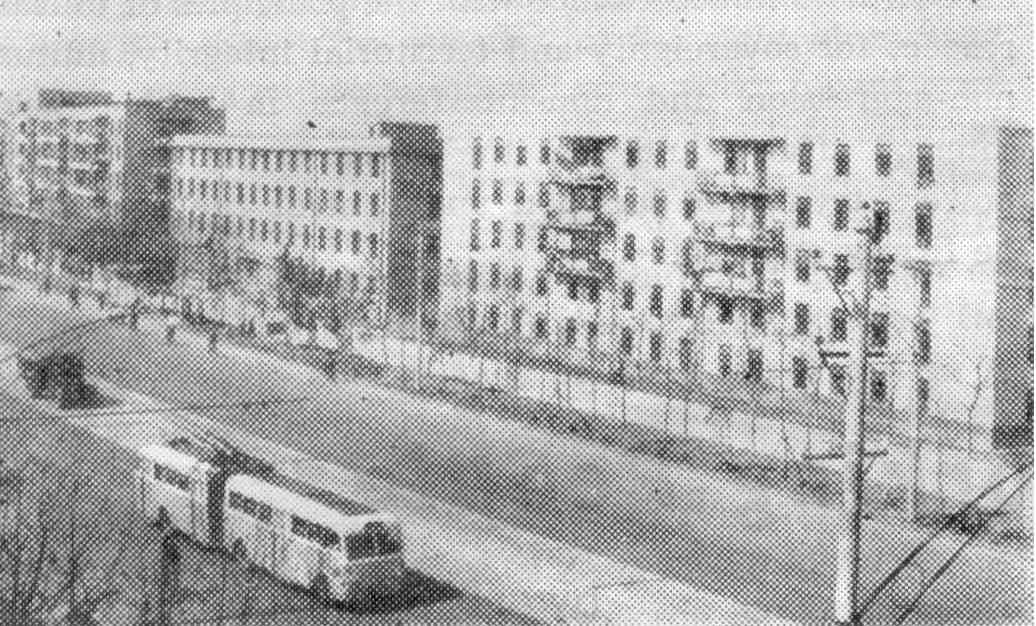Housing the Working People
by Hsing Huai-kao
[This article is reprinted from Peking Review, #33, Aug. 18, 1972, pp. 15-16.]
FROM 1949, when the People’s Republic of China was founded, to 1971, the first year of the Fourth Five-Year Plan for the Development of the National Economy, over 62 million sq. m. of new permanent housing were built for workers and their families in eight medium-sized and large industrial centres—Peking, Shanghai, Kwangchow, Nanking, Tientsin, Huhehot, Loyang and Hofei.
Before liberation, when the country was under the rule of imperialism, feudalism and bureaucrat-capitalism, the working people lived in dwellings of the shoddiest construction, in congested slums, and in tumble-down reed-mat shanties. Dilapitated and dangerous, they made up over one half of all urban residences in the major cities. One in every five persons in pre-liberation Shanghai lived in a slum. Many lived in garrets and attics, and some even slept under the eaves, in doorways or on sidewalks. In Changsha, capital of Human Province, slums accounted for 77 per cent of the total residential area. In Nanking, about 200,000 people were crowded into some 360 squalid slums. In Chengtu, Szechuan Province, floorspace in the slums per person averaged 1.61 sq. m. That was how the working people in the cities had to live.
With liberation, the state embarked on large-scale economic development and took measures to provide a better life, materially and culturally, for the working people step by step. Urban housing construction was taken into account in state economic development plans, and appropriations for housing increased as production developed. If state investment for public housing projects in 1950 is taken as 1, the index is 5.3 in 1953 (the first year of the First Five-Year Plan) and 10.5 in 1958 (the first year of the Second Five-Year Plan). Each year of the Third Five-Year Plan saw nearly 3 million people moving into decent, low-rent houses built by the state.
Over the past 22 years the state has financed the building of nearly 10 million sq. m. of new housing in Shanghai, China’s largest industrial city, as well as repairing or rebuilding another 14 million sq. m. of old houses.
Many dwellings have been erected in new industrial centres. In Loyang, Honan Province, they amount to over four times the pre-liberation figure, and in Hofei, Anhwei Province, eight times. The floorspace of new houses built in Chengtu and Chungking (Szechuan Province), in Sian (Shensi Province), in Lanchow (Kansu Province) and other cities in the interior has doubled or increased several times. In Sinkiang, Kwangsi, Yunnan and Tibet many new houses have also been built in the cities for the national minority people.

The Liberation Boulevard in Wuhan.
Throughout the past 22 years, Chairman Mao’s principle of “maintaining independence and keeping the initiative in our own hands and relying on our own efforts” has been adhered to by our government. Nearly 300 cities have been built or have undergone major reconstruction, and construction has been carried out in 2,000 towns and industrial districts. Schools, hospitals, theatres, cinemas, cultural palaces, libraries, gymnasiums and kindergartens have gone up along with the residential construction effort. Roads, parks, green belts, water supply and sewage systems were also laid out. In general all residential areas have a fairly complete complex of community facilities and utilities.
In the new Taching Oilfield, out in the wide open grassland, living quarters were built in line with the principle of “combining industry with agriculture and the urban with the rural, beneficial to production and convenient to dwellers.” These living quarters consist of a number of central villages, each with several settlements clustered around it within a kilometre or two.
More than 11,000 families of boat-dwellers in Kwangchow have moved ashore to live in new four- or six-storeyed apartment houses. These apartment blocks with a total floor-space of 240,000 sq. m. are located in six residential areas.
In Tibet, the thousand-year-old city of Lhasa has doubled its floorspace over the past two decades. The new districts are complete with housing estates, hospitals, restaurants, children’s palace, exhibition hall, working people’s cultural palace, bookstores and department stores. Lhasa now boasts tarmac roads, a bus service and piped water. Most homes have electricity.
Houses built by the state are administered by municipal housing bureaus or else put in the hands of factories and offices. Rent, including water, electricity and central heating, generally comes to about 5 per cent of an ordinary worker’s wages and there are no extra charges for repairs and maintenance.
Contents page for this Peking Review issue.
Return to Peking Review article list